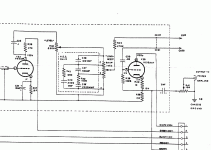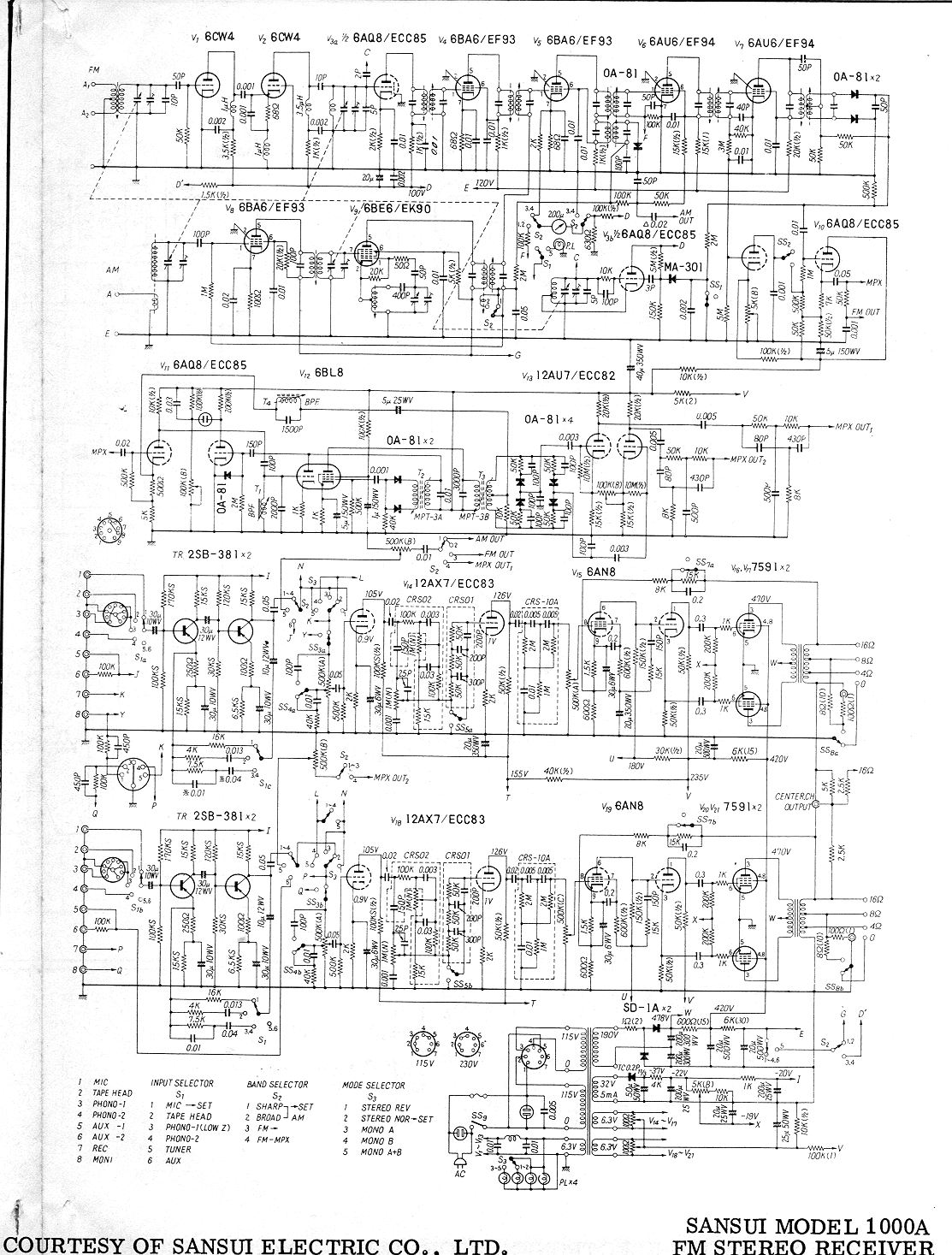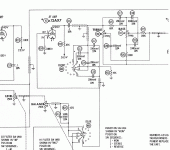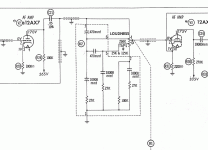I've just run across a Heathkit integrated amp that has a dual-volume pot (per channel) and I vaguely remember seeing it in an old Bogen tube amp as well. There is one pot at the front end of the preamp and one at the front of the power amp. The pots are ganged together as a single control.
Not quite sure I see any good reason for it, other than perhaps to allow the pre and the amp to be usable separately with their own gain control. In normal operation the volume control does feel a bit unusual, as you need to crank it up higher for mid-level operation than you would for a normal control.
I see several distinct downsides to this strategy, first and foremost throwing away gain you've already made. Does anyone see any advantages?
Not quite sure I see any good reason for it, other than perhaps to allow the pre and the amp to be usable separately with their own gain control. In normal operation the volume control does feel a bit unusual, as you need to crank it up higher for mid-level operation than you would for a normal control.
I see several distinct downsides to this strategy, first and foremost throwing away gain you've already made. Does anyone see any advantages?
Advantages?
Yes, of course.
As you correctly labelled it, it's distributed gain control.
The conventional options are:
1) volume pot at the power amp input.
Pro: you can zero preamp noise/hum/hiss.
Excellent for home use, quiet surroundings, where residual noise can and will be annoying.
Con: if you use any signal source appreciably higher than expected, as in connecting a CD or Digital Audio source with, say, 2V RMS output instead of the 100/200mV expected at the "Aux" input , or use a higher output cartridge , if Phono is your thing, etc., you can easily overdrive the preamp and create *horrible* distortion.
Or at least make it work in an appreciably less linear area.
And you have no way to correct that
I mean, within that amplifier.
2) volume pot after an early gain stage, but still with one or 2 gain stages between it and Power Amp.
Pro: it's much "safer".
Con: even with volume on 0 , you still hear some hiss/hum.
3) the split solution you mention, addresses most concerns posted above.
As of: "throwing away gain you've already made." , well, that's exactly what passive volume controls do
Yes, of course.
As you correctly labelled it, it's distributed gain control.
The conventional options are:
1) volume pot at the power amp input.
Pro: you can zero preamp noise/hum/hiss.
Excellent for home use, quiet surroundings, where residual noise can and will be annoying.
Con: if you use any signal source appreciably higher than expected, as in connecting a CD or Digital Audio source with, say, 2V RMS output instead of the 100/200mV expected at the "Aux" input , or use a higher output cartridge , if Phono is your thing, etc., you can easily overdrive the preamp and create *horrible* distortion.
Or at least make it work in an appreciably less linear area.
And you have no way to correct that
I mean, within that amplifier.
2) volume pot after an early gain stage, but still with one or 2 gain stages between it and Power Amp.
Pro: it's much "safer".
Con: even with volume on 0 , you still hear some hiss/hum.
3) the split solution you mention, addresses most concerns posted above.
As of: "throwing away gain you've already made." , well, that's exactly what passive volume controls do
Since I don't know 'which' Heath integrated amp you are referring to, here's a diagram of the level and loudness control on a Heath SP2 preamp. You could achieve a variable loudness effect using these two controls. The Bell Carillon 6060 integrated amp used a similar setup, but with the tone control section between the level and loudness controls.


Last edited:
Yes, Stromberg and Sherwood stereo amps also used two separate gain / loudness controls, allowing variable loudness compensation. But the original poster was talking about two ganged controls (Stromberg also used this in the mono days...). One further feature this could give is more choices for control taper - two linear pots won't give a linear response, since level will be 1/4 at 1/2 setting etc.
Advantages?
Yes, of course.
As you correctly labelled it, it's distributed gain control.
The conventional options are:
1) volume pot at the power amp input.
I've never seen an integrated with the volume pot at the power amp input. Can you show me one?
Pro: you can zero preamp noise/hum/hiss.
Please explain how a volume pot can "zero" preamp noise/hiss. And what exactly is "zeroing".
As of: "throwing away gain you've already made." , well, that's exactly what passive volume controls do
Yes, that's my point exactly, why do it twice? What's your point?
There's *tons* of them , it was the classic topology in 70's and 80's consumer Hi Fi (Akai/Sansui/Technics/Aiwa//Philips, etc.)I've never seen an integrated with the volume pot at the power amp input. Can you show me one?
Unfortunately all schematics and service manuals seem to be on sale.
Here's 3 free ones, by Sansui and HH Scott:
An externally hosted image should be here but it was not working when we last tested it.


That's 2 questions for the price of onePlease explain how a volume pot can "zero" preamp noise/hiss. And what exactly is "zeroing".
Google is your friend for any term not in your vocabulary, but to save you some time, here are accepted definitions, straight out of Dictionary, Encyclopedia and Thesaurus - The Free Dictionary
Apply any or all of the underlined meanings to noise/hum/hiss and you'll get the point of having a volume control as late as possible in the signal chain.....
b. A cardinal number indicating the absence of any or all units under consideration.
....
d. An argument at which the value of a function vanishes.
....
5. Informal One having no influence or importance
....
6. The lowest point
....
8. Informal Nothing; nil
....
adj.
1. Of, relating to, or being zero.
2.
a. Having no measurable or otherwise determinable value.
b. Informal Absent, inoperative, or irrelevant in specified circumstances
....
1. To eliminate
2. To reduce to zero.
Again "two for one"?Yes, that's my point exactly, why do it twice? What's your point?
OK.
a) reread my original explanation, it's all there.
b) *MY* point?
I'm not pushing any point, I'm answering your question and explaining what "the point of the original designer was"
- Status
- This old topic is closed. If you want to reopen this topic, contact a moderator using the "Report Post" button.
- Home
- Amplifiers
- Tubes / Valves
- Distributed volume pot

